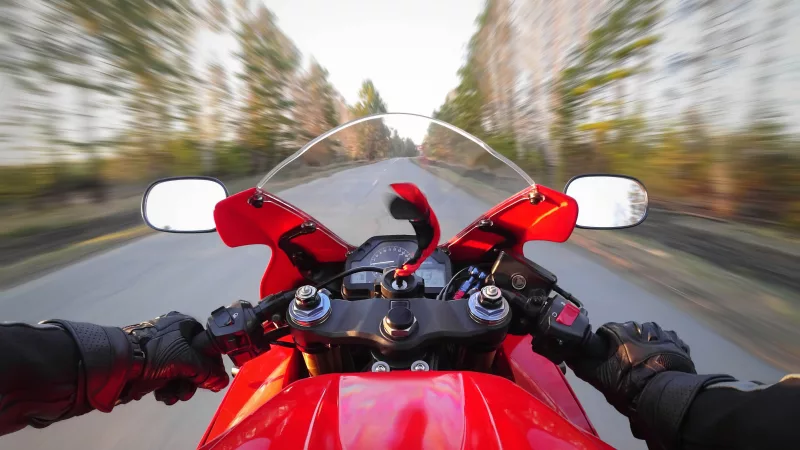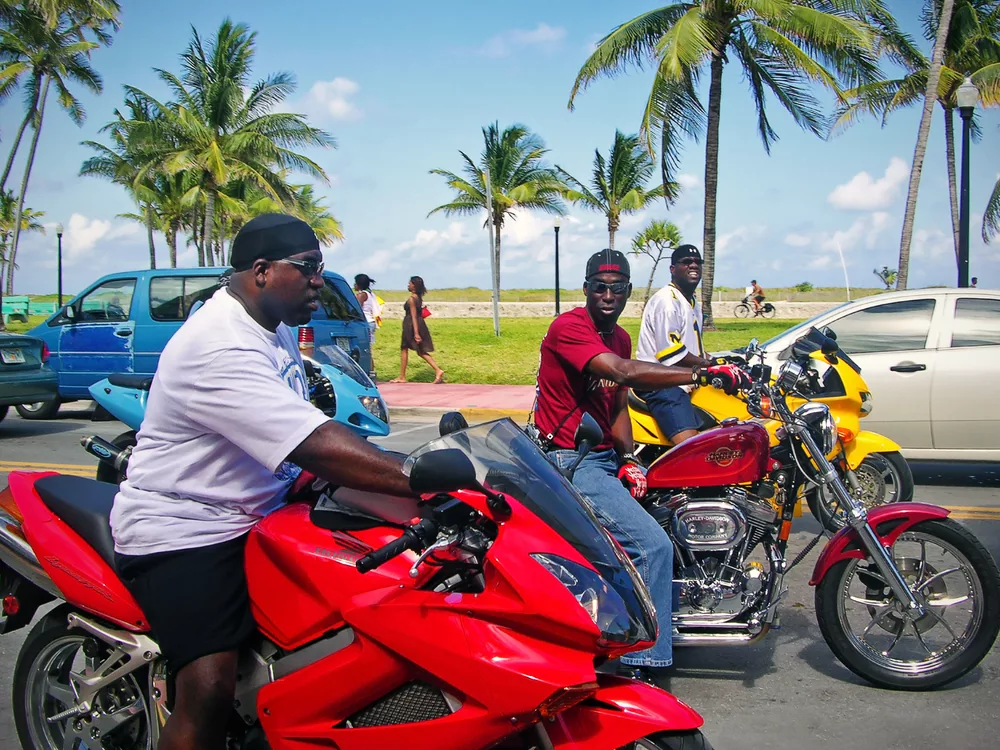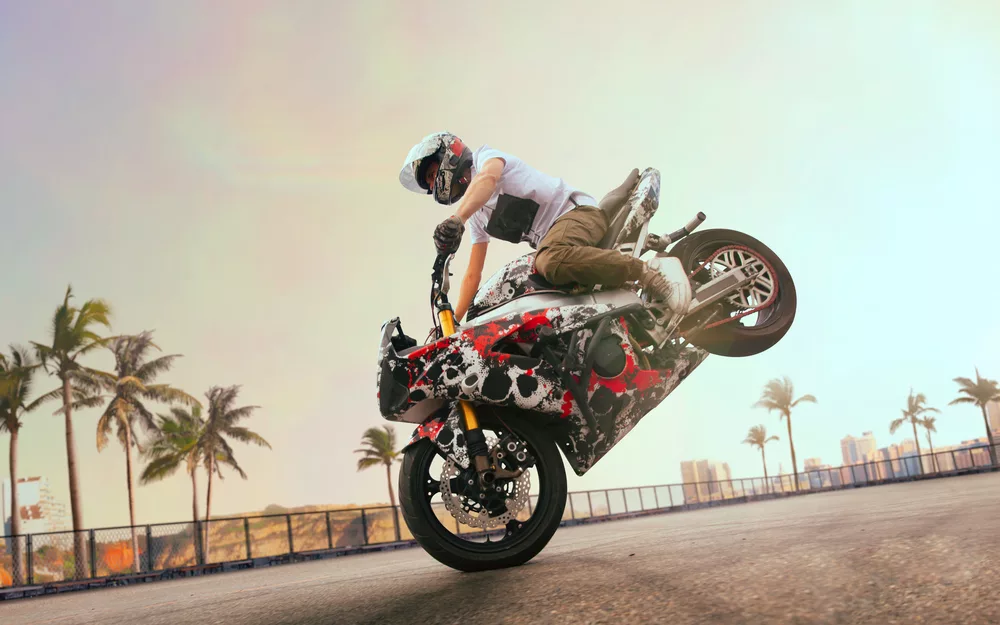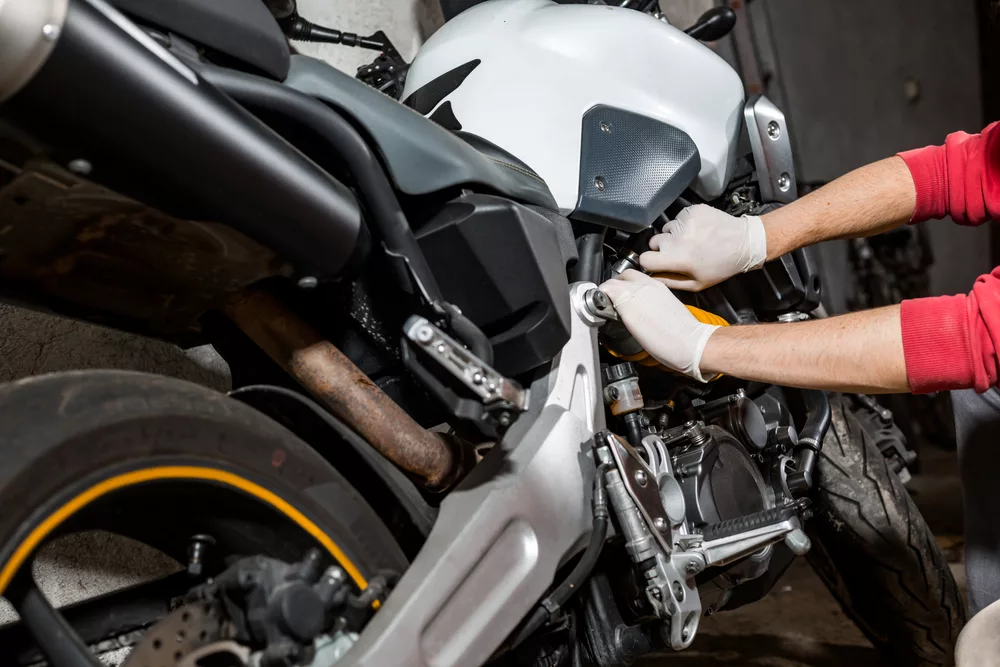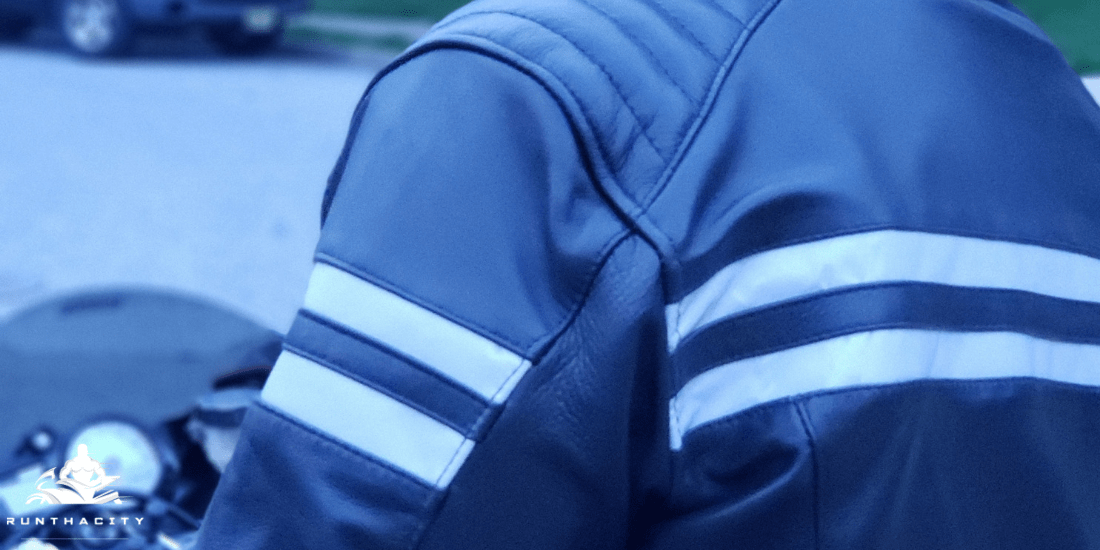Hi Everyone! This is my first motovlog! I’m riding a 2004 Yamaha YZF-R6. Don’t forget to subscribe and comment!!
You Might also like
-
The Psychology of Speed: Understanding the Sportbike Lifestyle
Sportbikes are known for their high-performance capabilities, sleek design, and thrill-seeking lifestyle. From track days to weekend rides, the sportbike culture is a unique and passionate community that revolves around speed and adrenaline. But what is it about sportbikes and the lifestyle that appeals to so many riders? In this article, we’ll explore the psychology behind the sportbike lifestyle, from the thrill of speed to the sense of community and belonging.
The Thrill Of Speed
The thrill of speed is one of the biggest draws of sportbiking, and it’s what sets it apart from other forms of transportation. The sensation of cutting through the wind, feeling the power of the engine, and pushing your limits is unmatched. For many riders, the rush of adrenaline that comes from going fast is what keeps them coming back for more. Speed is a powerful force that stimulates the brain, releasing adrenaline and endorphins that create a euphoric state. This can be addictive, and the desire for more speed is what drives many sportbike riders.
But, it’s important to note that speed should never come at the expense of safety. Sportbike riders must always be aware of their surroundings, follow speed limits, and ride within their abilities. Responsible riding is key to ensuring that the thrill of speed remains a positive and safe experience.
Overall, the thrill of speed is a central part of the sportbike lifestyle and is what attracts riders to this high-performance form of transportation. Whether it’s the rush of adrenaline or the satisfaction of pushing your limits, the thrill of speed is what makes sportbiking such a unique and exciting experience.
Sense of Community and Belonging
The sportbike lifestyle often brings riders together to form a tight-knit community of like-minded individuals who share a passion for speed and the thrill of the ride. This sense of community and belonging can be incredibly empowering and can lead to lasting friendships and memories.
Whether it’s participating in track days, weekend rides, or simply hanging out at the local motorcycle hangout, sportbike riders often find a sense of camaraderie and belonging that they simply can’t find anywhere else. This sense of community is not just limited to local riders, but extends to a global network of riders who are united by their love of speed and the sportbike lifestyle.
Riding a sportbike can be a solitary experience, but when riders come together, it becomes a shared experience, and the thrill of speed is multiplied. Whether riders are racing on the track, exploring new roads, or simply cruising down the highway, the sportbike lifestyle is all about pushing boundaries, challenging oneself, and experiencing the thrill of speed.
For many sportbike riders, the sense of community and belonging is just as important as the thrill of speed. It gives riders the opportunity to connect with like-minded individuals, share their experiences, and enjoy the sport together. Whether it’s participating in group rides or simply hanging out and talking about bikes, the sportbike lifestyle offers riders a sense of belonging that they can’t find anywhere else.
Building Confidence and Skill
Building confidence and skill is a critical part of the sportbike lifestyle. Whether you’re a beginner or an experienced rider, sportbikes offer a unique challenge and the opportunity to continually improve your riding skills. For many sportbike riders, the thrill of riding fast is not just about speed, but also about mastering the machine and developing the confidence and skill to control it.
One of the ways to build confidence and skill is by taking a motorcycle training course, such as a beginner’s riding school or an advanced track day. These courses offer a safe and controlled environment to practice riding skills, receive feedback from experienced instructors, and learn from other riders. Additionally, you can also attend riding events or track days, where you can ride with other riders and experience the thrill of speed in a safe and controlled environment.
Another way to build confidence and skill is by practicing regularly. Sportbikes are designed for high-performance riding, and the more you ride, the more comfortable and confident you’ll become. Whether it’s riding to work, hitting the local twisties, or exploring new roads, regular riding will help you develop your skills and become a better rider.
Finally, riding with a group can also help build confidence and skill. Whether it’s a local riding club, a group of friends, or a track day organization, riding with others provides an opportunity to learn from more experienced riders and experience the thrill of speed in a supportive and fun environment.
In conclusion, building confidence and skill is an integral part of the sportbike lifestyle, and there are many opportunities to develop and improve your riding skills. Whether it’s through training courses, regular riding, or riding with a group, the sportbike lifestyle offers a unique challenge and the chance to become a better, more confident rider.
Conclusion
The sportbike lifestyle is about much more than just speed and adrenaline. It’s about the thrill of pushing yourself to the limit, the sense of community and belonging, and the opportunities to build confidence and develop new skills. Whether you’re a seasoned rider or just starting out, the sportbike lifestyle is a unique and exciting world that is waiting to be explored. So, why not join the sportbike community today and discover the psychology of speed for yourself?
-
Tips for Buying Your First Sportbike
Sportbikes are fast, flashy, and fun, but they are also complex machines that require a significant investment of time and money. Before you buy your first sportbike, it’s important to consider the following tips to make an informed decision and find the right bike for your needs.
Consider Your Riding Style:
Before you start shopping for a sportbike, it’s important to determine what type of riding you want to do. Do you want to push the limits of your bike on a racetrack or do you want a bike that’s comfortable for long-distance touring? Here are a few different styles of sportbikes to consider:
- Track-focused sportbikes: These bikes are designed for high-speed, aggressive riding on a racetrack. They have powerful engines, lightweight frames, and advanced suspension systems. They are not recommended for daily street riding as they are not well-suited for comfort and practicality.
- Street-oriented sportbikes: These bikes are designed for fast and nimble street riding. They are lightweight, have powerful engines, and are typically more comfortable than track-focused sportbikes. They are ideal for riders who want a sporty and fun riding experience on public roads.
- Sport-touring bikes: These bikes are designed for long-distance riding and offer the best of both worlds: performance and comfort. They are equipped with large fairings, windscreens, and comfortable seats, making them ideal for riders who want to cover long distances in comfort.
By considering your riding style and the type of riding you want to do, you’ll be able to narrow down your options and find the right sportbike for your needs.
Set Your Budget:
Sportbikes can be expensive, and the cost of ownership goes beyond just the purchase price. Before you start shopping, it’s important to set a budget and consider the ongoing costs of ownership, including insurance, maintenance, and upgrades.
Here are a few tips to help you stay within your budget:
- Determine how much you can afford to spend: Consider your monthly income and expenses, and determine how much you can comfortably afford to put towards your sportbike.
- Factor in insurance costs: Insurance is an essential part of owning a sportbike, and the cost can vary greatly depending on the type of bike and your location. Research insurance rates before you buy, and factor these costs into your budget.
- Plan for maintenance costs: Sportbikes require regular maintenance, and the costs can quickly add up. Make sure to factor in the cost of oil changes, tire replacements, and other routine maintenance items into your budget.
- Consider the cost of upgrades: Many sportbike owners like to make upgrades to their bikes, and the costs can quickly add up. Consider the cost of upgrades and factor these into your budget before you buy.
Remember, the most expensive bike is not always the best, and there are many affordable options that offer excellent performance and value. By setting a budget and considering the ongoing costs of ownership, you’ll be able to find the right sportbike that fits your needs and your budget.
Find the Right Size:
When buying a sportbike, it’s important to find the right size and fit to ensure maximum comfort and control while riding. Here are a few tips to help you find the right size:
- Consider your height, weight, and inseam length: The size of a sportbike can greatly affect how comfortable and in control you feel while riding. Use your height, weight, and inseam length to determine which bikes might be the right size for you.
- Test-ride several models: The best way to determine the right size is to test ride several different models. This will give you a chance to get a feel for each bike and see how well it fits you.
- Check the seat height: When test riding, pay attention to the seat height. You should be able to comfortably reach the ground with both feet while seated on the bike.
- Consider the reach to the handlebars: The reach to the handlebars is also important, as it affects your comfort and control while riding. Make sure the reach is comfortable and that you can easily reach the controls.
- Check the weight: The weight of a sportbike can greatly affect how comfortable and in control you feel while riding. Be sure to take note of the weight of each bike you test ride and consider how it affects the overall feel of the bike.
By considering your height, weight, and inseam length, and test riding several models, you’ll be able to find the right size and fit for your needs and ensure maximum comfort and control while riding your sportbike.
Inspect the Bike Carefully
Before you buy a sportbike, inspect it carefully for any signs of damage or wear. Check the wheels, tires, brakes, and suspension for any signs of damage, and make sure the engine runs smoothly and quietly. If you’re unsure about anything, have a mechanic inspect the bike before you make a purchase.
Additionally, pay attention to the bike’s overall appearance. Look for any signs of rust or corrosion, especially in areas such as the exhaust pipes, frame, and suspension components. Check the battery to make sure it holds a charge and has enough power to start the engine. Test the bike’s electrical system to ensure all lights, signals, and gauges are working properly. Check the air filter and oil level, and make sure the bike has been properly maintained and serviced according to the manufacturer’s guidelines.Another important aspect to consider is the bike’s history. Make sure to request a vehicle history report to determine if the bike has been in any accidents, or if it has a clean title. If you’re buying a used bike from a dealer, ask about the previous owner and if the bike has been well taken care of. If you’re buying from a private seller, be cautious and take a close look at the bike to see if it has any signs of abuse or neglect.
It’s also important to test ride the bike before making a purchase. This will give you a good feel for the bike’s handling, braking, and acceleration. Take the bike on different types of roads, including highways, twisty roads, and stop-and-go traffic, to get a good idea of how it handles different conditions. This will also help you determine if the bike is comfortable for you and if it’s the right size and fit for your needs.
In summary, thoroughly inspecting a sportbike before making a purchase is a critical step in ensuring you’re getting a high-quality, reliable machine that will provide you with years of riding enjoyment.
Research the Model and Brand
When researching a sportbike, it’s important to take a deep dive into the model and brand you’re interested in. This will give you an understanding of the bike’s history, reliability, and any common problems riders have experienced. Start by reading reviews from trusted sources to get a better understanding of the bike’s strengths and weaknesses. You can also visit online forums and read what other riders have to say about their experiences with the bike. Ask questions and take note of any common complaints or issues that have been raised. This information can be invaluable in helping you make an informed decision. Additionally, consider reaching out to the manufacturer or a dealership to learn about any current or upcoming models that may interest you. It’s always a good idea to do your due diligence before making a big purchase, and researching the sportbike you’re interested in is a key step in that process.
Conclusion
In conclusion, when it comes to buying your first sportbike, there are many factors to consider. From determining your riding style and setting a budget, to finding the right size and fit, and carefully inspecting the bike before making a purchase, each step is important in ensuring you make the right choice for your needs. Additionally, researching the model and brand you are interested in will give you valuable insight into the bike’s history, reliability, and common problems. With this information, you will be able to make an informed decision and enjoy many years of thrilling riding. Don’t be afraid to take your time and shop around, the right sportbike is out there waiting for you. Happy riding!
-
Safety First: Essential Gear for Sportbike Riding
Sportbike riding is a thrilling and exhilarating experience, but it can also be dangerous if proper safety precautions are not taken. One of the most important steps you can take to protect yourself while riding is to wear the right gear. Whether you’re a seasoned rider or just starting out, it’s essential to have the right equipment to keep you safe on the road.
Riding a sportbike is a thrilling experience, but it is also important to prioritize safety. Wearing the right gear can help protect you in the event of a crash and keep you comfortable on long rides. In this article, we will explore the essential items that every sportbike rider should have.
Download RunThaCity’s Cheatsheet for Essential Gear for Sportbike Riding
Protect Your Most Valuable Asset with a DOT or Snell Certified Helmet
When it comes to riding a sportbike, the helmet is the most crucial piece of gear you can wear. It protects the most valuable part of your body, your head and neck. It is essential to choose a helmet that is DOT or Snell certified, as these have undergone rigorous testing to meet strict safety standards. A good helmet should fit snugly and comfortably, without being too tight or too loose. Make sure to try on several different brands and models to find the best fit for your head shape.
A good helmet should also have adequate ventilation to keep your head cool and dry, as well as an interior lining that is comfortable and moisture-wicking. Some helmets come with removable and washable liners, which can be a great feature for keeping your helmet fresh and clean. The helmet should also have a secure chin strap that keeps the helmet in place in the event of a crash.
When choosing a helmet, consider your riding style, as well as the weather conditions you will be riding in. If you do a lot of highway riding, a full-face helmet is a good choice, as it provides the most protection for your face and chin. If you do a lot of off-road riding, an open-face or modular helmet may be a better option, as it provides better ventilation and a wider field of view.
In conclusion, the helmet is the most important piece of gear you can wear while riding a sportbike. It is essential to choose a DOT or Snell certified helmet that fits well and provides adequate protection for your head and neck. Invest in a high-quality helmet, as it could save your life in the event of a crash.
Protect Your Body with the Right Motorcycle Jacket
A motorcycle jacket is a crucial piece of gear for sportbike riding. It serves not only as a barrier against wind and rain, but also as a layer of protection in the event of a crash. When choosing a motorcycle jacket, look for one made of abrasion-resistant material, such as leather or kevlar. This type of material will provide better protection in the event of a slide or impact.
Some motorcycle jackets come equipped with armor in the elbows, shoulders, and back. This extra layer of protection can help reduce the risk of injury in a crash. When shopping for a motorcycle jacket, look for one with CE-certified armor, as this type of armor has been tested to meet strict safety standards.
In addition to protection, a motorcycle jacket should also be comfortable to wear. Look for a jacket with adjustable straps and zippers, as well as a lining that will keep you warm on cooler days and cool on hot days. When trying on a jacket, make sure it fits well and allows for a full range of motion.
By investing in a high-quality motorcycle jacket, riders can feel confident and protected while riding their sportbike.
Protect Your Hands with Abrasion-Resistant Gloves
When it comes to riding a sportbike, gloves are more than just a comfort item – they are essential for safety. In addition to protecting your hands from wind, rain, and other elements, gloves can help protect your hands in the event of a crash. Abrasion-resistant materials, such as leather or heavy-duty fabrics, provide the best protection against road rash and other injuries.
When choosing gloves, it’s important to look for gloves with reinforced palms. This extra layer of protection helps to prevent injuries to your hands, as well as reducing the risk of cuts and bruises in the event of a crash. Make sure the gloves fit snugly, but are not too tight, as you want to ensure they do not restrict your ability to grip the handlebars or shift gears.
Ultimately, investing in a good pair of motorcycle gloves can make a big difference in terms of your safety and comfort on the road. So, make sure to choose gloves that meet your specific needs, whether you are looking for additional protection, extra comfort, or improved grip.
Keep Your Feet Safe with Motorcycle Boots
Riding a sportbike can be dangerous, especially if you don’t have the proper gear to protect yourself. Your feet and ankles are especially vulnerable in the event of a crash, making motorcycle boots an essential piece of gear for any rider.
When choosing motorcycle boots, look for a pair that is made of abrasion-resistant material. This will help protect your feet from road rash in the event of a crash. Additionally, look for boots that have reinforced toes and heels. These extra layers of protection can help reduce the risk of injury in the event of an impact.
Another important factor to consider when choosing motorcycle boots is fit. Make sure the boots fit snugly and don’t move around on your feet while you ride. This will help you maintain proper control of your bike, especially in the event of a sudden maneuver.
In addition to providing protection, motorcycle boots can also offer added comfort and support. Look for boots with a comfortable and supportive insole, and choose a pair that is water-resistant if you plan on riding in inclement weather.
Motorcycle boots are a crucial piece of gear for any sportbike rider. By investing in a high-quality pair of abrasion-resistant boots with reinforced toes and heels, you can help protect your feet and ankles while enjoying your ride.
Protect Your Lower Half with Motorcycle Pants
When it comes to motorcycle gear, many riders focus on the upper half of their body, but it’s just as important to protect the lower half as well. Motorcycle pants are an essential piece of gear that should be made of abrasion-resistant material to protect your legs in the event of a crash. The material should be strong enough to resist tearing and provide a barrier against the road in the event of an accident.
When choosing motorcycle pants, look for pants with reinforced knees and hips. These areas are vulnerable in the event of a crash, so extra protection is essential. Many pants also feature adjustable straps and zippers to provide a secure and comfortable fit.
In addition to safety, motorcycle pants should also be comfortable to wear for extended periods of time. Look for pants that are made of breathable material and provide a good range of motion for riding. Consider the climate in your area when choosing pants and look for options that are designed to keep you cool in hot weather or warm in cold weather.
Motorcycle pants are an essential piece of gear that should not be overlooked. Protect your legs and ensure your comfort by investing in a good pair of motorcycle pants.
Eye Protection
Eye protection is an essential aspect of sportbike riding that should not be overlooked. When riding at high speeds, debris from the road can easily fly up and cause injury to your eyes. This is why investing in a good pair of motorcycle glasses or a full-face helmet with a visor is important. The glasses or visor should have the capability to shield your eyes from wind, rain, and other elements that can cause discomfort and distraction while riding. Additionally, it is important to choose glasses or a visor that provides a clear and unobstructed view while riding.
In the event of a crash, a full-face helmet with a visor provides added protection for your face and eyes. The visor will protect your face from impacts, as well as prevent debris from entering your helmet. On the other hand, motorcycle glasses can be removed and replaced quickly and easily, making them a convenient option for riders who frequently switch between open-face and full-face helmets.
Eye protection is an essential component of sportbike riding gear. It helps keep you safe from the elements, debris from the road, and other potential hazards while riding. Invest in a good pair of motorcycle glasses or a full-face helmet with a visor, and ensure that you have the proper eye protection to enjoy a safe and comfortable ride.
Conclusion
In conclusion, having the right gear while riding a sportbike is not only crucial for your safety but also enhances your overall riding experience. Wearing the right gear protects you from the elements, including wind, rain, and road debris, and also helps prevent injury in case of a crash. A DOT or Snell-certified helmet, abrasion-resistant jacket, gloves, boots, pants, and proper eye protection are all important pieces of gear that every sportbike rider should have. Don’t compromise on safety and invest in high-quality gear that will give you peace of mind and allow you to fully enjoy your ride. Remember, when it comes to riding a sportbike, safety should always come first.

